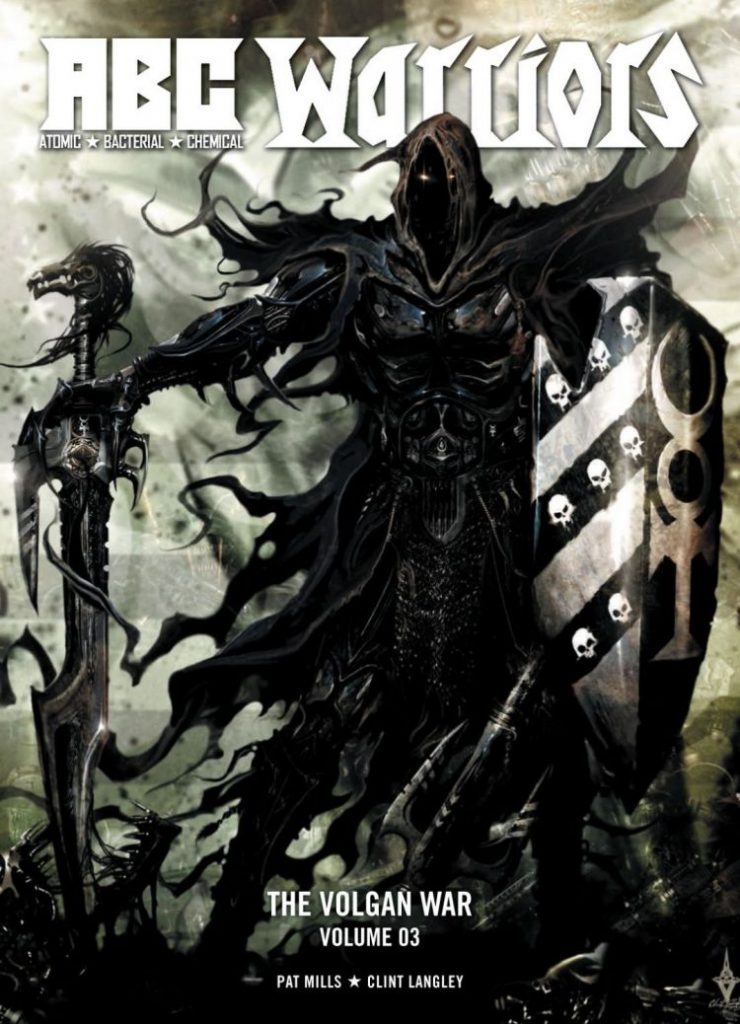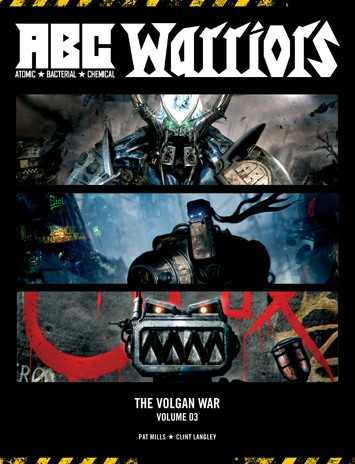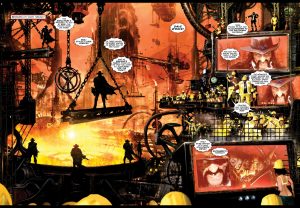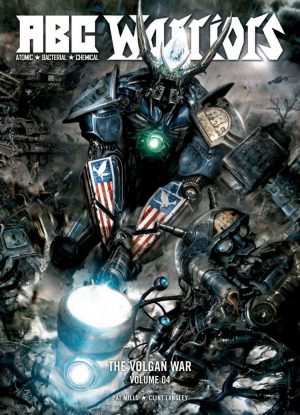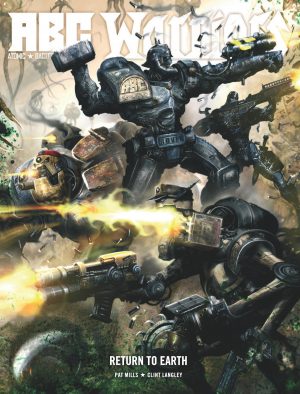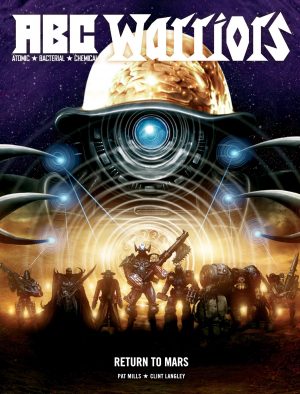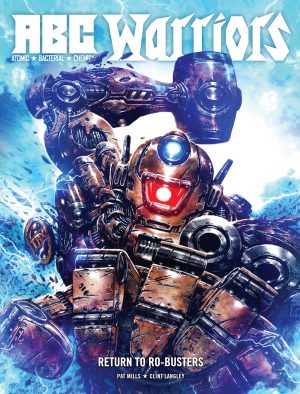Review by Ian Keogh
Because Pat Mills plotted this third instalment of The Volgan War as a shorter sequence, it’s rather left the publisher scrabbling for back-up material to extend the collection to a hundred pages. In other books this might be blatant filler, but Mills rises to the occasion by providing new text himself. There’s a continuity of the ABC Warriors, including sequences that Mills would later write, but obviously planned, and immigration form questionnaires answered by each of the team in character, based on Mills’ disbelief at the actual questions found on US immigration visa forms.
The main story covers two strands. As the ABC Warriors in the present day travel to recruit a new member, Zippo, they recall their differing participation in the Volgan War of the late 21st century, Blackblood on the side of the Volgans before his reprogramming. It’s also been revealed that a threat from the era has been concealed, but still lives, and Blackblood is keen on seeing Volkhan free again. Zippo is known to each of the Warriors from their war days, and in the present day is due to be executed on Mars
Proving the adage of a picture being able to convey a thousand words, we present Clint Langley’s sample art. Conventional superlatives fail. While certainly varying style, it’s usually the case that American and British comic art falls behind the technical capacity of the average European artist. Langley’s spiritual home is the Metal Hurlant of the 1970s, expanding the mind with his art, but his digital techniques ensure his capacities are 21st century and solidly immerse readers in the surroundings. There may be fewer than a hundred story pages, but for anyone wanting to see painted robot warfare there can surely be no finer graphic novel, with Langley surpassing his earlier work on the series. How long it must have taken him to produce page after page of this quality doesn’t bear thinking about.
What at first appeared to be random interludes from the past have a continuity to them as Mills not only threads Zippo’s appearances through the recollections of individual warriors, but orders the stories so Blackblood’s past cruel excesses are also told. Steelhorn’s memories build on the brief earlier period he had with warriors, Mills grounding what had been thrown together in the strip’s founding run with logic and sense. There are indulgences. Mills has frequently referenced bands in his strips, but here attempting to define a robot’s musical taste comes across as gratuitous, but set against what is achieved that’s a minor quibble.
Much of Mills’ output has the thematic background of control and oppression set against anarchy and freedom, with no doubt as to where the writer’s views fall, and while it might be interesting to see him reverse his attentions, coupled with Langley’s detail this could be the peak of his themes. With Steelhorn’s story told, Mills sets about mythologising taggers before moving to the story that he’s been building toward from the start, but that’s one told in Volume Four. This? This is a big job carried out to exceptional standards.
